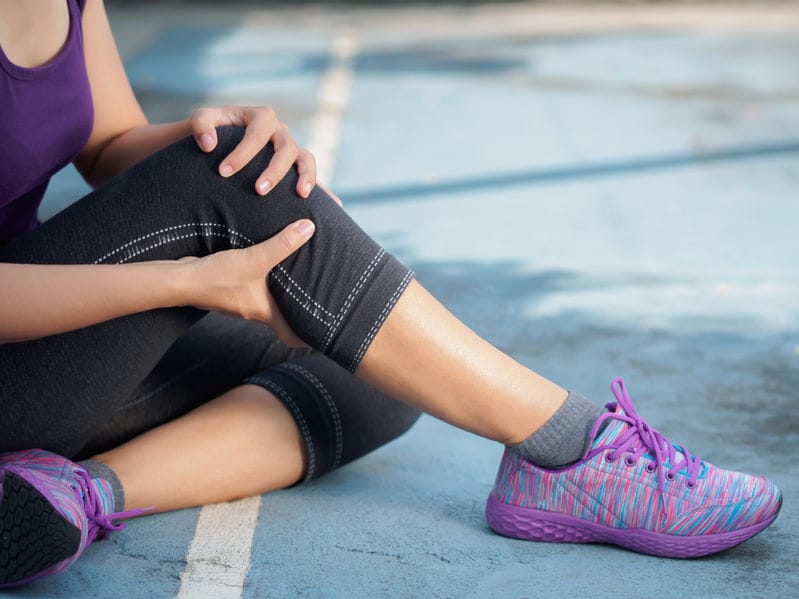There hasn’t been much about the pandemic that’s been good, but one thing has been the way that a lot of people have decided to get outside and get (back) into fitness. Perhaps the most popular option has been jogging. A common complaint of those new to jogging (as well as those who have been at it for a while) is tight calf muscles.
Going for a jog has the obvious cardiovascular (heart) health benefits along with the added bonus of being a great way to clear your head. (In fact, just going out for a long walk can be a great way to clear your head as well. A long walk in nature can be especially potent.)
Stretching isn’t usually the answer
Initially, the obvious solution seems to be stretching out your calves. There’s a (seemingly) good reason for this: somehow, somewhere, some-when, our collective consciousness has ingrained the idea that when something hurts, we stretch it.
The trick of it is that stretching will provide only modest and transient relief at best. (There’s room for us to do a separate, longer post on stretching and why it tends not to be as effective as we think it is…but that’s for another time).
So why are my calves so tight?
The most honest answer to this question is, I can’t say for sure… But that’s because bodies are super complex and our current state of understanding hasn’t given us enough information to say conclusively this is why your calves are tight.
We can, however, make some educated guesses based on the research of people smarter than us and tendencies we’ve observed in other humans combined with experience.
All of which is to say, the following may work well for you…but it also might not resolve things for you…because this is a blog on the internet.
Tendencies…
First of all, there is the obvious: jogging is basically a series of alternating single-leg hops. Depending on how long you go jogging for, we could be talking hundreds (and hundreds) of hops. That’s gonna ask a lot of your calf muscles, so it’s not a surprise that they might feel tight.
That’s not the whole story though:
On the one hand, your calf muscles could be working hard to absorb the impact of each stride…but that’s only if you’re landing each stride with your toes/ball of your foot first, rather than your heel.
On the other hand, your calf muscles play a role in propelling you forward with each stride.
If your calf muscles are feeling tight and sore after running, there’s a good chance they’re working harder than they should be.
Here’s where we talk about ideal running mechanics
You see, ideally, it’s your glutes and hamstrings that do most of the work of extending your hip with each running stride. For one reason or another (you know, like maybe too much sitting in a less-than-optimal position while working long hours at home…or some other life circumstance), the glutes often end up under-performing and the calf muscles jump in pick up the slack, so to speak.
Those well-meaning, helpful calf muscles.
And a part of why the glutes aren’t doing as much as they should is because the hamstrings aren’t doing all they should to keep your pelvis in a good position.
This is often exacerbated by, or perhaps caused by (it can be a bit chicken and egg sometimes), the tendency for people to have overactive low-back muscles and underactive core muscles, which is usually a by-product of lots of sitting.
Sheesh.
So, what’s a calf to do?
First, let’s get those calf muscles to begin settling down. For the most part, the tightness you feel is neurological, meaning it’s a product of your nervous system telling the muscle to hold on to a certain amount of tension. So we begin with an exercise designed to dial-up the neural activity in your core muscles…with your “core” in a good position (which is with your ribcage positioned such that your diaphragm lines up with the muscles of your pelvic floor):
Do two to three rounds of five-breath holds on each side.
It’s Hammy time!
Next, we target those hamstrings…and a bunch of other stuff.
The goal here is to put your pelvis into a slightly tucked under position and then to encourage your hamstrings to do some extra work to keep it there. Then, we add an alternating left-right pattern of engagement…kind of like how your legs work when you’re walking, jogging or running. Mix in some stabilization through your core and we have a recipe for better hamstring and glute engagement, which frees up the calf muscles to do less.
Do two to three rounds of eight reps on each side.
Your calves will feel better the more you do these.
The thing here is that this isn’t magic bullet: doing a couple of sets of these exercises before you go for a jog won’t necessarily resolve your calf tightness. These tend to need time to build-up. We’re aiming to strengthen your hamstrings and encourage them to work better. As they get the message, so to speak (meaning, as they get stronger), your calves should begin to settle down.
My suggestion would be to add two to three rounds of these two exercises as part of your pre-jogging warm-up for a week and see how you feel. Let us know how it goes—we’d be happy to troubleshoot with you if you have any questions.

